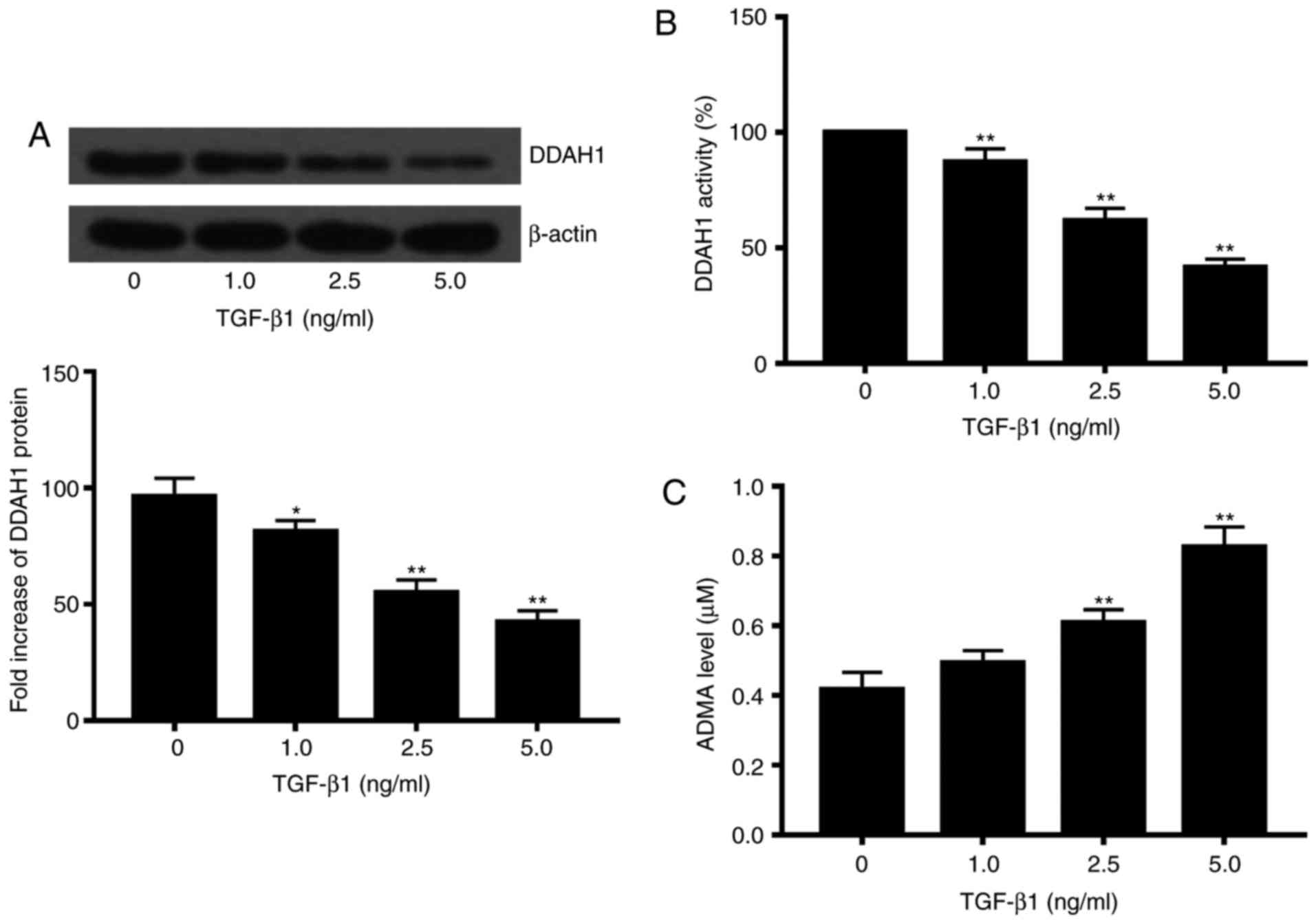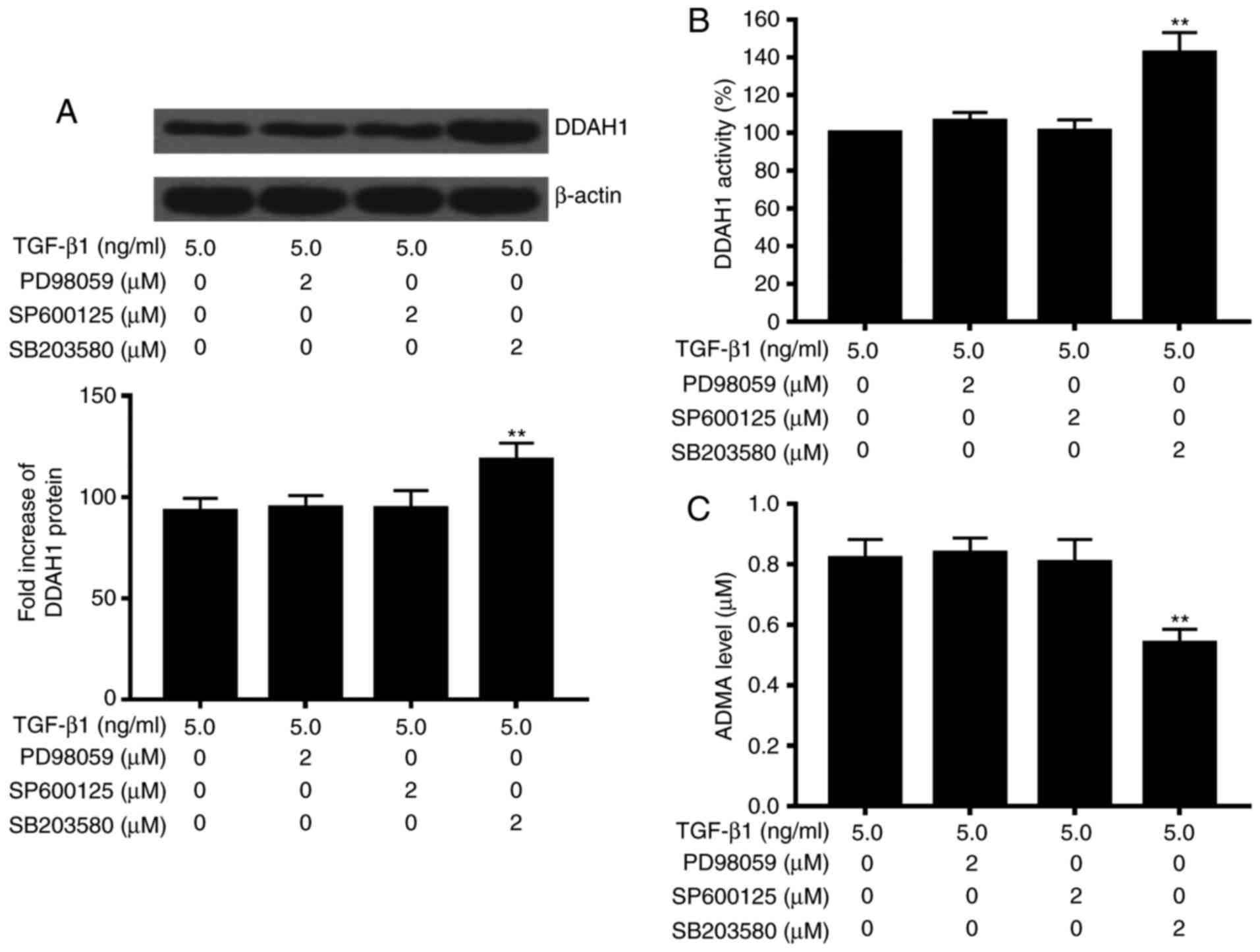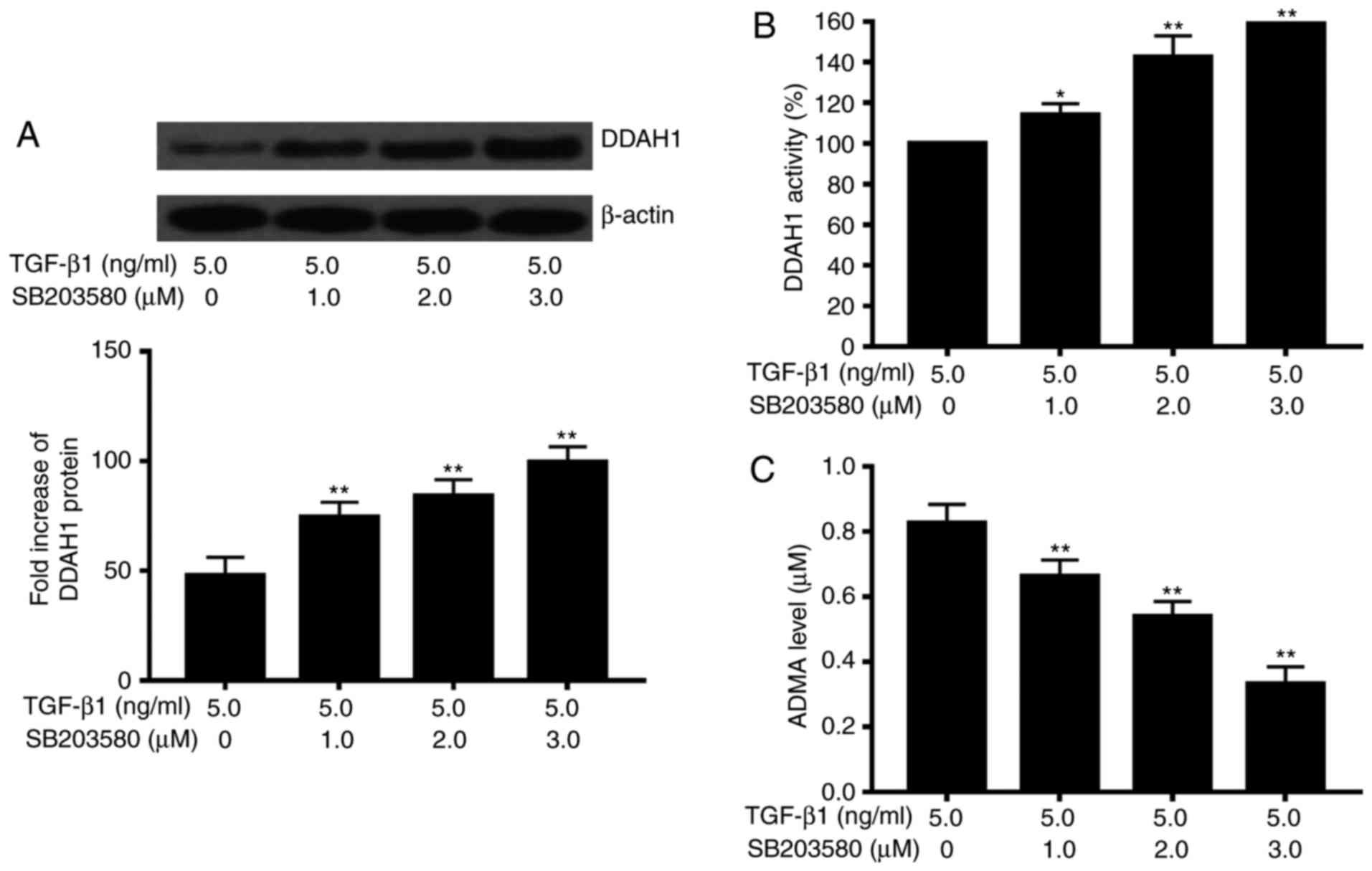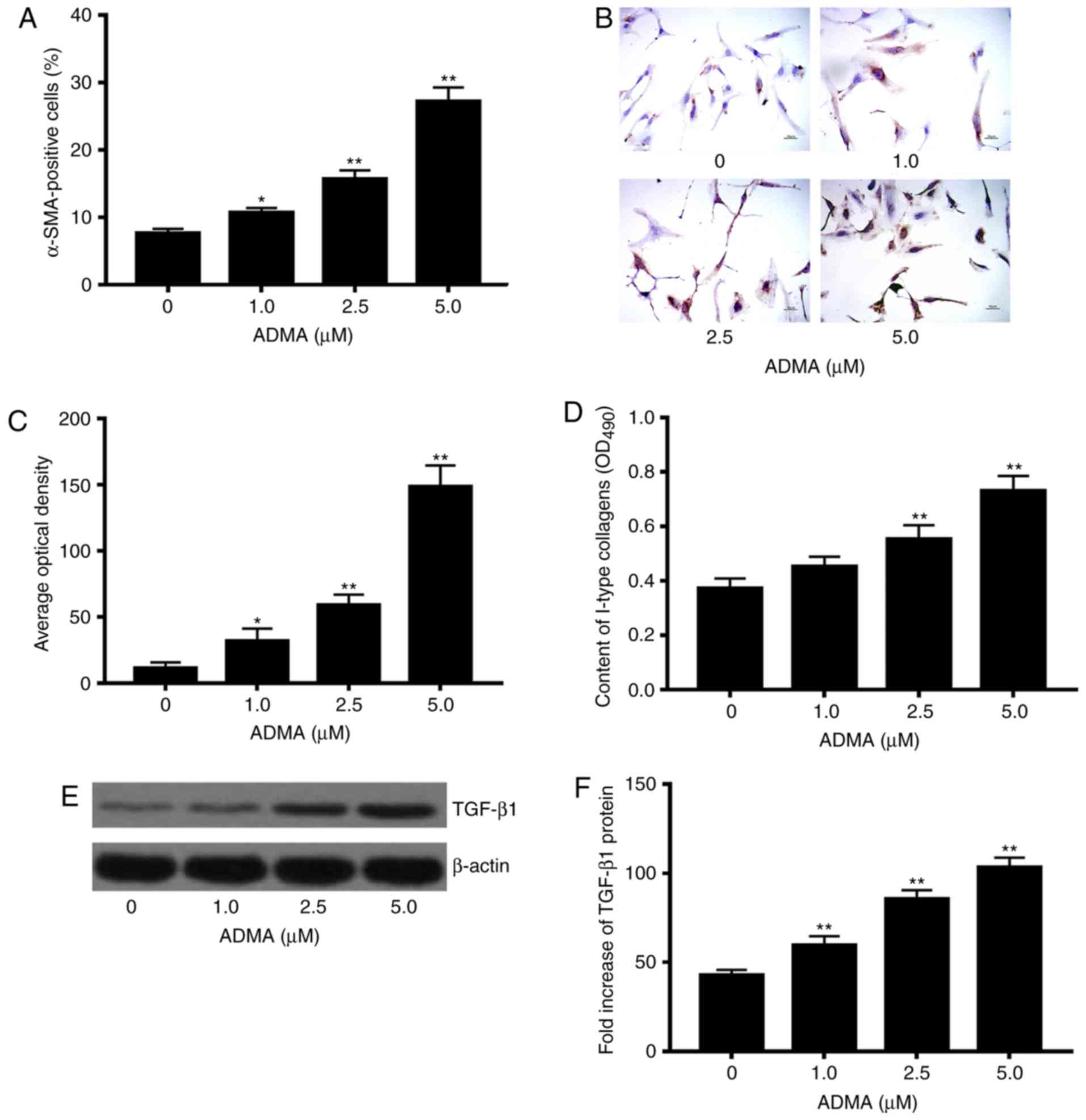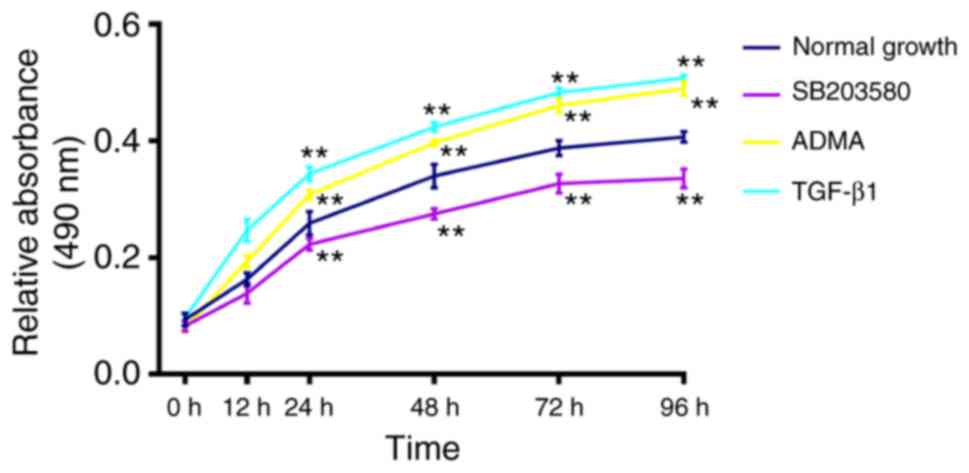|
1
|
Koyama Y, Xu J, Liu X and Brenner DA: New
developments on the treatment of liver fibrosis. Dig Dis.
34:589–596. 2016. View Article : Google Scholar : PubMed/NCBI
|
|
2
|
Lee YA, Wallace MC and Friedman SL:
Pathobiology of liver fibrosis: A translational success story. Gut.
64:830–841. 2015. View Article : Google Scholar : PubMed/NCBI
|
|
3
|
Zhou WC, Zhang QB and Qiao L: Pathogenesis
of liver cirrhosis. World J Gastroenterol. 20:7312–7324. 2014.
View Article : Google Scholar : PubMed/NCBI
|
|
4
|
Li J, Wang W and Shen JL: The role of
TGFbeta1 and IL-13 in cellular signal transduction of hepatic
fibrosis of schistosomiasi. Zhongguo Ji Sheng Chong Xue Yu Ji Sheng
Chong Bing Za Zhi. 27:357–360. 2009.(In Chinese). PubMed/NCBI
|
|
5
|
Fabregat I, Moreno-Càceres J, Sánchez A,
Dooley S, Dewidar B, Giannelli G and Ten Dijke P; IT-LIVER
Consortium, : TGF-β signalling and liver disease. FEBS J.
283:2219–2232. 2016. View Article : Google Scholar : PubMed/NCBI
|
|
6
|
Dooley S and ten Dijke P: TGF-β in
progression of liver disease. Cell Tissue Res. 347:245–256. 2012.
View Article : Google Scholar : PubMed/NCBI
|
|
7
|
Sakai K, Jawaid S, Sasaki T, Bou-Gharios G
and Sakai T: Transforming growth factor-β-independent role of
connective tissue growth factor in the development of liver
fibrosis. Am J Pathol. 184:2611–2617. 2014. View Article : Google Scholar : PubMed/NCBI
|
|
8
|
Hayashi H and Sakai T: Biological
significance of local TGF-β activation in liver diseases. Front
Physiol. 3:122012. View Article : Google Scholar : PubMed/NCBI
|
|
9
|
Massague J: TGFβ signalling in context.
Nat Rev Mol Cell Biol. 13:616–630. 2012. View Article : Google Scholar : PubMed/NCBI
|
|
10
|
Dayoub H, Achan V, Adimoolam S, Jacobi J,
Stuehlinger MC, Wang BY, Tsao PS, Kimoto M, Vallance P, Patterson
AJ and Cooke JP: Dimethylarginine dimethylaminohydrolase regulates
nitric oxide synthesis: Genetic and physiological evidence.
Circulation. 108:3042–3047. 2003. View Article : Google Scholar : PubMed/NCBI
|
|
11
|
Arrigoni F, Ahmetaj B and Leiper J: The
biology and therapeutic potential of the DDAH/ADMA pathway. Curr
Pharm Des. 16:4089–4102. 2010. View Article : Google Scholar : PubMed/NCBI
|
|
12
|
Matsumoto Y, Ueda S, Yamagishi S,
Matsuguma K, Shibata R, Fukami K, Matsuoka H, Imaizumi T and Okuda
S: Dimethylarginine dimethylaminohydrolase prevents progression of
renal dysfunction by inhibiting loss of peritubular capillaries and
tubulointerstitial fibrosis in a rat model of chronic kidney
disease. J Am Soc Nephrol. 18:1525–1533. 2007. View Article : Google Scholar : PubMed/NCBI
|
|
13
|
Ferrigno A, Rizzo V, Bianchi A, Di Pasqua
LG, Berardo C, Richelmi P and Vairetti M: Changes in ADMA/DDAH
pathway after hepatic ischemia/reperfusion injury in rats: the role
of bile. Biomed Res Int. 2014:6274342014. View Article : Google Scholar : PubMed/NCBI
|
|
14
|
Baranyi A, Meinitzer A, Putz-Bankuti C,
Stauber R, Kapfhammer HP and Rothenhäusler HB: Asymmetric
dimethylarginine responses during interferon-α-induced depression
in patients with chronic hepatitis C infection. Psychosom Med.
76:197–207. 2014. View Article : Google Scholar : PubMed/NCBI
|
|
15
|
Mookerjee RP, Malaki M, Davies NA, Hodges
SJ, Dalton RN, Turner C, Sen S, Williams R, Leiper J, Vallance P
and Jalan R: Increasing dimethylarginine levels are associated with
adverse clinical outcome in severe alcoholic hepatitis. Hepatology.
45:62–71. 2007. View Article : Google Scholar : PubMed/NCBI
|
|
16
|
Sharma JN, Al-Omran A and Parvathy SS:
Role of nitric oxide in inflammatory diseases.
Inflammopharmacology. 15:252–259. 2007. View Article : Google Scholar : PubMed/NCBI
|
|
17
|
Kelly LK, Wedgwood S, Steinhorn RH and
Black SM: Nitric oxide decreases endothelin-1 secretion through the
activation of soluble guanylate cyclase. Am J Physiol Lung Cell Mol
Physiol. 286:L984–L991. 2004. View Article : Google Scholar : PubMed/NCBI
|
|
18
|
Failli P, DeFRANCO RM, Caligiuri A,
Gentilini A, Romanelli RG, Marra F, Batignani G, Guerra CT, Laffi
G, Gentilini P and Pinzani M: Nitrovasodilators inhibit
platelet-derived growth factor-induced proliferation and migration
of activated human hepatic stellate cells. Gastroenterology.
119:479–492. 2000. View Article : Google Scholar : PubMed/NCBI
|
|
19
|
Knook DL, Seffelaar AM and de Leeuw AM:
Fat-storing cells of the rat liver. Their isolation and
purification. Exp Cell Res. 139:468–471. 1982. View Article : Google Scholar : PubMed/NCBI
|
|
20
|
Shu JC, Zhao JR, Yang DH, Shen Y and Zhong
CC: An improved method for the isolation of rat hepatic stellate
cells. Zhonghua Gan Zang Bing Za Zhi. 12:353–355. 2004.(In
Chinese). PubMed/NCBI
|
|
21
|
Chang W, Yang M, Song L, Shen K, Wang H,
Gao X, Li M, Niu W and Qin X: Isolation and culture of hepatic
stellate cells from mouse liver. Acta Biochim Biophys Sin
(Shanghai). 46:291–298. 2014. View Article : Google Scholar : PubMed/NCBI
|
|
22
|
Jiang DJ, Jiang JL, Tan GS, Du YH, Xu KP
and Li YJ: Protective effects of daviditin A against endothelial
damage induced by lysophosphatidylcholine. Naunyn Schmiedebergs
Arch Pharmacol. 367:600–606. 2003. View Article : Google Scholar : PubMed/NCBI
|
|
23
|
Kasumov T, Edmison JM, Dasarathy S,
Bennett C, Lopez R and Kalhan SC: Plasma levels of asymmetric
dimethylarginine in patients with biopsy-proven nonalcoholic fatty
liver disease. Metabolism. 60:776–781. 2011. View Article : Google Scholar : PubMed/NCBI
|
|
24
|
Ferrigno A, Di Pasqua LG, Berardo C,
Richelmi P and Vairetti M: Liver plays a central role in asymmetric
dimethylarginine-mediated organ injury. World J Gastroenterol.
21:5131–5137. 2015. View Article : Google Scholar : PubMed/NCBI
|
|
25
|
Lluch P, Segarra G and Medina P:
Asymmetric dimethylarginine as a mediator of vascular dysfunction
in cirrhosis. World J Gastroenterol. 21:9466–9475. 2015. View Article : Google Scholar : PubMed/NCBI
|
|
26
|
Wang W, Zhao C, Zhou J, Zhen Z, Wang Y and
Shen C: Simvastatin ameliorates liver fibrosis via mediating nitric
oxide synthase in rats with non-alcoholic steatohepatitis-related
liver fibrosis. PLoS One. 8:e765382013. View Article : Google Scholar : PubMed/NCBI
|
|
27
|
Sharma V, Ten Have GA, Ytrebo L, Sen S,
Rose CF, Dalton RN, Turner C, Revhaug A, van-Eijk HM, Deutz NE, et
al: Nitric oxide and L-arginine metabolism in a devascularized
porcine model of acute liver failure. Am J Physiol Gastrointest
Liver Physiol. 303:G435–G441. 2012. View Article : Google Scholar : PubMed/NCBI
|
|
28
|
Li JC, Chang L, Lu D, Jiang DJ and Tan DM:
Effect of asymmetric dimethylarginine on the activation of hepatic
stellate cells and its mechanism. Zhong Nan Da Xue Xue Bao Yi Xue
Ban. 32:427–432. 2007.(In Chinese). PubMed/NCBI
|
|
29
|
Wang L, Zhang D, Zheng J, Feng Y, Zhang Y
and Liu W: Actin cytoskeleton-dependent pathways for ADMA-induced
NF-κB activation and TGF-β high expression in human renal
glomerular endothelial cells. Acta Biochim Biophys Sin (Shanghai).
44:918–923. 2012. View Article : Google Scholar : PubMed/NCBI
|
|
30
|
Mihout F, Shweke N, Bigé N, Jouanneau C,
Dussaule JC, Ronco P, Chatziantoniou C and Boffa JJ: Asymmetric
dimethylarginine (ADMA) induces chronic kidney disease through a
mechanism involving collagen and TGF-β1 synthesis. J Pathol.
223:37–45. 2011. View Article : Google Scholar : PubMed/NCBI
|
|
31
|
Shibata R, Ueda S, Yamagishi S, Kaida Y,
Matsumoto Y, Fukami K, Hayashida A, Matsuoka H, Kato S, Kimoto M
and Okuda S: Involvement of asymmetric dimethylarginine (ADMA) in
tubulointerstitial ischaemia in the early phase of diabetic
nephropathy. Nephrol Dial Transplant. 24:1162–1169. 2009.
View Article : Google Scholar : PubMed/NCBI
|
|
32
|
Lluch P, Torondel B, Medina P, Segarra G,
Del Olmo JA, Serra MA and Rodrigo JM: Plasma concentrations of
nitric oxide and asymmetric dimethylarginine in human alcoholic
cirrhosis. J Hepatol. 41:55–59. 2004. View Article : Google Scholar : PubMed/NCBI
|
|
33
|
Feng Y, Zhang D, Zhang Y, Zhang Q and Liu
W: The mechanism of long-term low-dose asymmetric dimethylarginine
inducing transforming growth factor-β expression in endothelial
cells. Int J Mol Med. 31:67–74. 2013. View Article : Google Scholar : PubMed/NCBI
|



